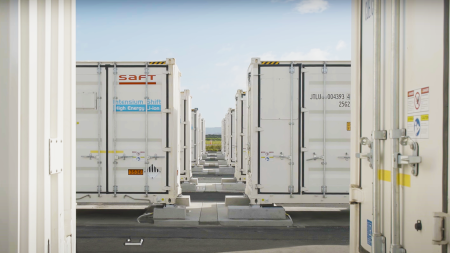Cottbusverkehr equips its vehicle fleet in the Cottbus area: a new area is formed around the Cottbusverkehr depot. Cottbusverkehr GmbH’s project scope includes the installation of a hydrogen filling station.
The LEAG subsidiary Transport- und Speditionsgesellschaft Schwarze Pump (TSS) GmbH and the Saxon village-based transport and logistics company REINERT LOGISTICS are partners in the “Sustainable Use of Hydrogen in Public Transportation” initiative.
“The LEAG is depending on the use of hydrogen as a future technology in its conversion to a contemporary and broad-based energy, infrastructure, and service organization,” said Andreas Huck, LEAG Board Member for New Business Areas, at the delivery of the award notification. “That is why we are delighted and glad to be a part of this regional project including the practical application of hydrogen fuel production.”
We are confident that the initial spark in Cottbus will spread to other Lusatia districts. Our goal must be to create a model network of hydrogen producers and users that is both economically and flexibly functional across Germany.”
Ralf Thalmann, Managing Director of Cottbusverkehr GmbH, is also pleased that the project can now get underway thanks to Brandenburg’s financial support: “We, as a transportation company, must and want to move forward in light of the need to reduce emissions in the transportation sector in a sustainable manner. It happened quickly. Hydrogen is the most sensible form of drive in the future for our operating demands to meet this obligation, we believe.
At the same time, we regarded this change in our bus fleet as a chance to contribute to Lusatia’s structural growth. We’ve gotten a lot closer to our target today. Everyone contributed to the development of this project: Cottbusverkehr, LEAG, the city of Cottbus / Chóebuz, the Lausitz economic district, and our hydrogen network “breathe through.” That gives us confidence that we will be able to meet the structural change difficulties that lie ahead.”
“From the beginning of the structural development process, it was evident to us that we from the region had to take things into our own hands,” Stefan Korb, Head of the Department of Economics, Digitization, and Structural Development in the City of Cottbus / Chóebuz, remarked. It was all the more crucial that our municipal firm, Cottbusverkehr, collaborated with the private company, LEAG, to design a joint starting proposal from and for the region. This deliberate collaboration between public and private players is critical for structural change to succeed. As the city of Cottbus / Chóebuz, we are sending out a signal for the development of a hydrogen economy, which will be the foundation for future value creation, according to the Lausitz Strategy 2050.
Jens Krause, president of the Cottbus Chamber of Commerce and Industry and spokesman for the “durcH2atmen” hydrogen network, praised Brandenburg’s assistance as well: “This initiative has been a huge success for our entire network, demonstrating that our hard work is paying off. We began in 2019 with the goal of bringing together regional partners that want to work together to address structural change while also bringing their own unique skills to the table. We regard the development of a sustainable hydrogen economy as a huge opportunity for our energy region’s future. The fact that the model project for sustainable hydrogen use in public transportation is already being implemented is proof of our collaborative efforts. We are certain,








